You’re enjoying a nice day out on the water when suddenly, your outboard motor begins producing a ton of smoke.
Or, maybe you haven’t even made it out there yet–as you fire up your motor for the first time, it produces so much smoke that you decide you had better not take it out today.
Either way, you’re left wondering: what could be causing the problem? Why does an outboard motor produce smoke?
Read on to learn more about the most common causes of outboard motor smoking.
Table of Contents
The Top 6 Reasons
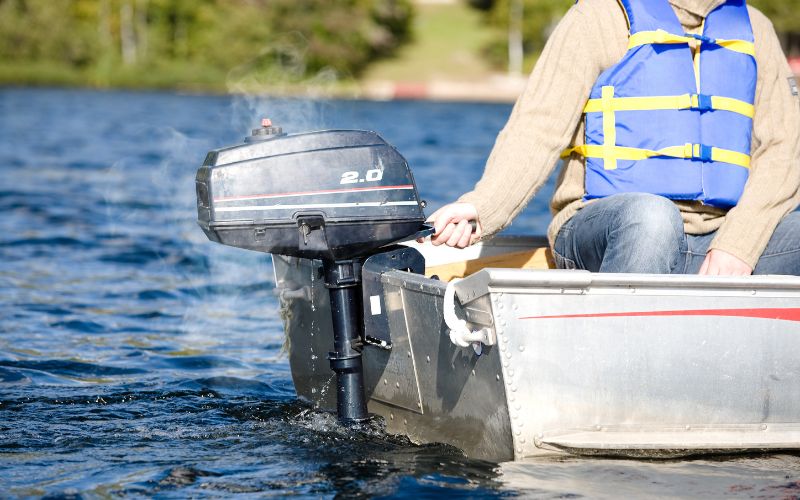
It is normal for most outboard motors to produce small amounts of smoke and steam.
This is especially true on cold mornings or when the motor has been sitting in storage for a long period of time.
That said, if your outboard motor is producing a lot of smoke, there may be an underlying problem causing this excess.
Let’s take a look at some of the most common reasons why your outboard motor is smoking.
1. Burning Oil
This is one of the most common reasons why 2-stroke outboard motors smoke. If you notice a large cloud of blue-tinged smoke pouring out of your exhaust port, then there’s a good chance you’ve got an improper balance of fuel and oil.
Most 2-stroke motors require a premixed blend of fuel and oil. These substances are combined in a specific ratio, commonly 50:1 (50 parts fuel to 1 part oil).
If you are premixing the fuel and oil yourself, it’s easy to make a slight mistake with the ratio. If you end up with too much oil in the mix, then the engine will burn off this excess oil and produce a cloud of blue smoke.
Always check your owner’s manual to ensure you use the proper blend for your specific motor.
Another thing that can affect the amount of smoke produced is the quality of the oil. Synthetic oils burn much more cleanly than conventional oils and, in turn, will naturally produce less smoke.
If you are using conventional or cheap oil in your outboard motor, this could be why it is smoking. It doesn’t necessarily indicate a problem with the motor, but you may want to switch to a higher quality oil that won’t smoke as much.
If you have a 4-stroke motor, chances are it won’t be burning oil. 4-stroke motors keep the fuel and oil separated, so the chances of excess oil getting in the system are pretty low.
If you do have a 4-stroke motor and it starts producing copious amounts of blue smoke, it is possible that you have an oil leak or worn out parts, which we’ll talk about a little later in this article.
2. Overheating
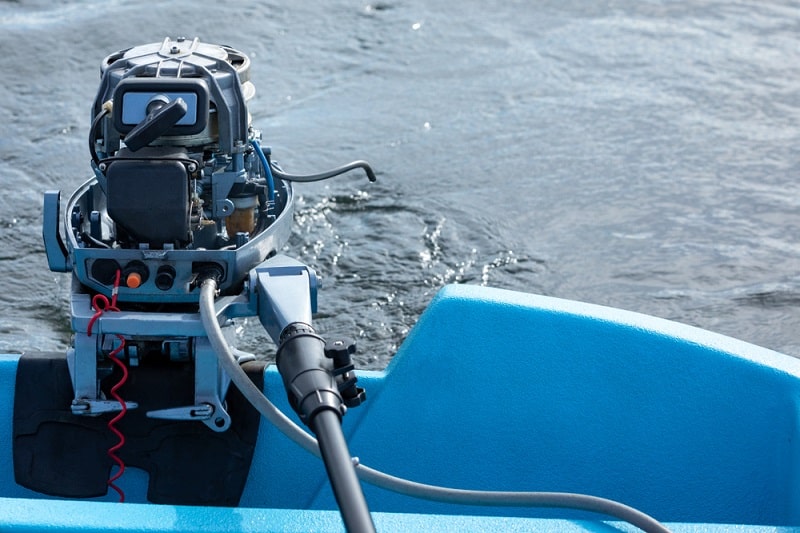
This is another common cause of smoking and may be an issue with both 2- and 4-stroke motors. If your engine is overheating, it will likely produce copious amounts of white smoke.
What causes an outboard motor to overheat?
There may be a problem with the engine itself, but most likely, overheating will be caused by a clogged cooling system.
Your motor’s cooling system most likely brings up water from the lake or river that you’re boating on. It sucks the water into the motor, pumps it over the engine to cool it down, then expels it back out.
Of course, most bodies of water have aquatic plants, trash, or other objects floating in them. Your motor’s pump may suck in these pieces of debris, clogging the system and preventing enough water from reaching the engine.
As a result, the engine will begin to overheat.
If you are out on the water and your motor suddenly begins producing white smoke, shut down the motor. This will sometimes allow the clog to remove itself.
If the debris is more firmly wedged, you may have to disassemble the system to remove it. This is best done by a small engine mechanic knowledgeable in outboard motors.
If there is no clog or your engine continues to overheat after it has been removed, the engine may have a more serious problem. Have it checked out by a small engine mechanic.
3. Fuel Injector Stuck Open

This problem most commonly occurs with 4-stroke motors but may also present with newer 2-strokes–any engine that has a fuel injecting system.
The smoke produced with this kind of a problem will be dark gray or black.
As the name suggests, fuel-injected motors are meant to have specific amounts of fuel injected into them over time. If the injector becomes stuck in the open position, too much fuel will flood the engine.
The motor may sputter and cough up a cloud of black smoke in an effort to rid itself of the excess fuel.
This problem will most likely need to be diagnosed and repaired by a small engine mechanic. If you notice black smoke pouring out of your engine, get it checked out as soon as possible.
4. Carbon Buildup
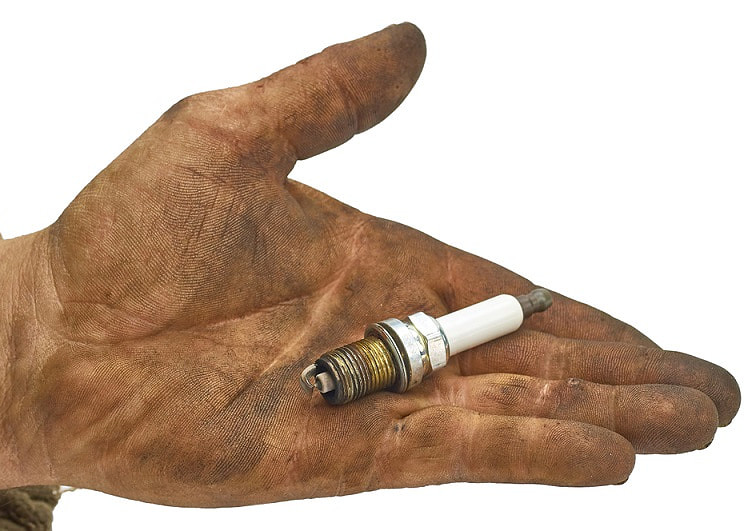
Carbon buildup on your spark plugs can also cause an engine to produce black smoke.
There are many issues that can cause this buildup, including:
- Excess oil
- Excess fuel
- Improper burning of fuel or oil
Check your spark plugs, or have them checked by a professional. They may need to be scrubbed with a wire brush or cleaned with a professional product such as Quickleen . If there is too much buildup, they may need to be replaced entirely.
5. Leaking Cylinder
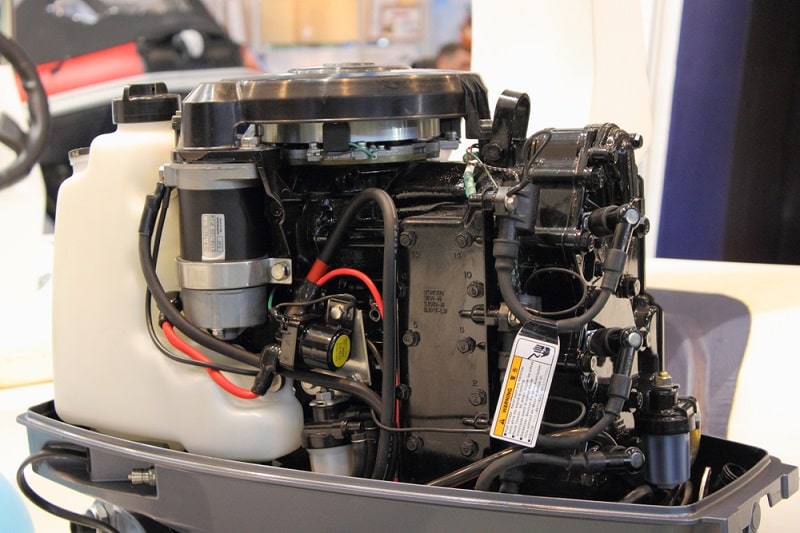
This is one of the less troubling causes of a smoking outboard motor because it is relatively cheap and easy to fix.
Sometimes your cylinders will blow a gasket or spring a leak of some kind. If that happens, water can get into the cylinder, causing the engine to produce excess steam and smoke.
If this is the case, the smoke produced will be white.
Check your cylinders to see if any of them appear cracked or damaged. If the cylinders themselves appear fine, it may be a broken gasket you’re dealing with.
You can either repair these yourself or take your motor to a repair shop to have it fixed.
6. Broken Parts
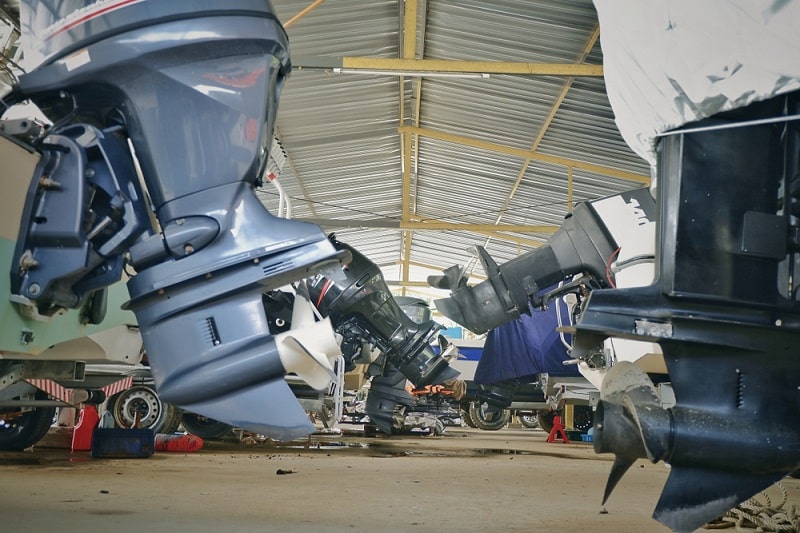
In addition to a cracked cylinder or broken gasket, other parts of the motor may wear out over time, causing the engine to produce more smoke than usual.
Depending on the specific part broken, the smoke may be white, black, or blue.
Some of the parts that may get worn out include piston rings, valves, and spark plugs. Sometimes, you may be able to simply replace these worn-out parts. Other times, the repairs may be more costly, or the engine may be too far gone to fix.
If you suspect failing parts are behind your smoking outboard motor, take it to a small engine mechanic and have it thoroughly examined. The mechanic will be able to identify the broken parts and give you advice on whether the motor can be fixed or not.

Sarah Hood has been writing for Anchor Travel since 2021. When she’s not writing, she enjoys cooking, singing, and spending time in the great outdoors.

